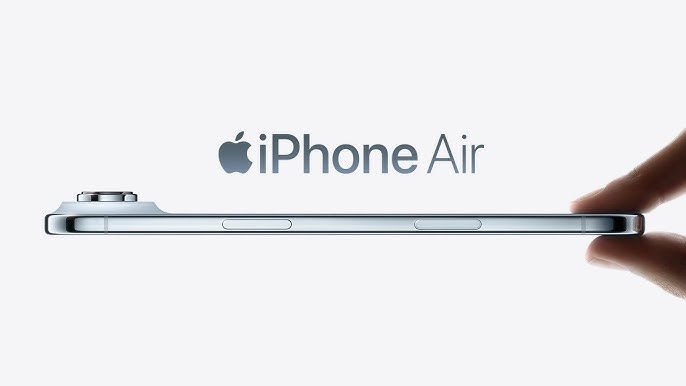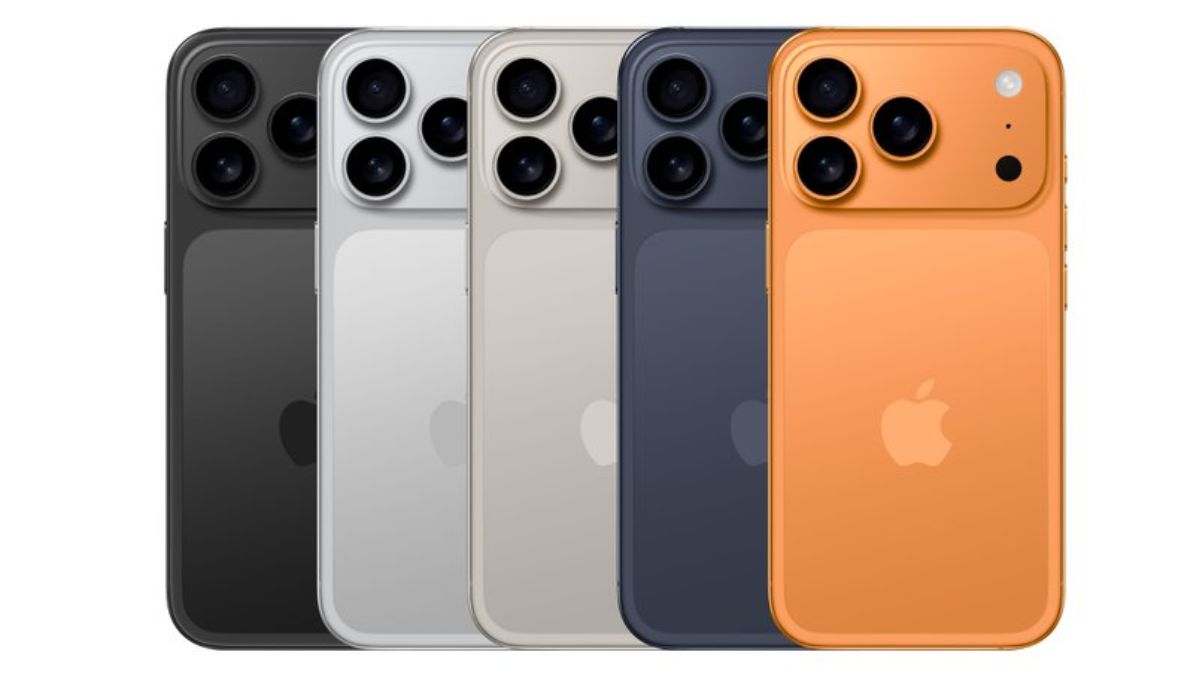Apple’s “Awe Dropping” keynote promised a design-led show, and the company delivered with hardware-first announcements. While Apple kept its AI message cautious, the hardware updates are substantive: the iPhone 17 Air is an engineering statement, the Pro models refine performance and cameras, Apple Watch updates push health monitoring forward, and AirPods Pro 3 add translation and health sensors. Below is a deep technical and practical breakdown — what changed, why it matters, and how Apple positioned each product.
Event logistics & tone
The keynote streamed live from Apple Park on September 9, 2025 at 10:00 a.m. PT (1:00 p.m. ET / 19:00 CEST). The invite’s touch-reactive, “liquid glass” motif set expectations for fluid UI and thin hardware, and Apple focused its narrative on craftsmanship, battery efficiency, and incremental AI that runs primarily on-device.
iPhone 17 Air — the design statement
The headline device was the iPhone 17 Air. Apple described it as its “thinnest engineering achievement,” at approximately 5.6 mm thickness and around 165 g. That number alone is marketing catnip, but the practical story is more nuanced: Apple used advanced titanium alloys and a reworked internal frame to keep structural rigidity while shaving millimeters.
Key specs (highlights):
- Display: 6.5" ProMotion OLED, 120 Hz adaptive (1–120 Hz), peak brightness up to 3000 nits for HDR highlights.
- Chipset: A19 Pro (6 nm class), neural engine improvements for on-device ML tasks; N1 companion chipset for connectivity (Wi-Fi 7, Bluetooth 6, Thread).
- Cameras: 48 MP main (larger sensor, improved pixel binning), 12 MP telephoto (2× optical on Air), 18 MP front camera with Center Stage & dual capture support (front + rear simultaneous recording).
- Battery & charging: Rated for up to ~27 hours video playback; supports fast wired charge and MagSafe. Apple also demoed a $99 MagSafe power pack that extends endurance to ~40 hours in mixed use.
- Storage & price: Base configuration starts at 256 GB for $999; preorder opens Sept 12, units ship Sept 19.
- Other: eSIM-first in many regions, water/dust resistance maintained, and Ceramic Shield 2 on the front glass for better scratch resistance.
Practical verdict: the Air is an excellent choice if you value portability and industrial design. The trade-off is battery capacity and potential repair complexity — a trade Apple mitigates with chip-level efficiency gains and the optional MagSafe power pack.
iPhone 17 / 17 Pro / 17 Pro Max — refined flagship upgrades
Apple didn’t ignore the rest of the lineup. All models now share a common baseline of 120 Hz displays and improved silicon. The Pro models focus on camera systems, thermal headroom, and pro video capabilities.
- Displays: Super Retina XDR across the board; Pro and Pro Max get higher sustained brightness and improved calibration for color-critical work.
- Camera: New computational modes for low-light, faster HDR pipelines, and advanced spatial video capture (Dolby Vision 4K60 supported where applicable).
- Battery & charging: Apple claims modest efficiency improvements — expect ~30 hours playback on larger Pro Max units, fast-charge to 50% in roughly 20 minutes.
- Connectivity: Wi-Fi 7, mmWave/5G improvements in regions that support it, and continued eSIM emphasis.
Apple Watch family — health, safety, endurance
The watch updates were focused and practical. Apple expanded health monitoring, improved battery life modes, and introduced faster radios for improved off-grid connectivity.
Watch SE 3
- S10-class chip, always-on display, new gesture control (wrist flick / double tap), improved sleep tracking and sleep apnea detection signals.
- Price: $249 — positioned as the best value for general users who want modern features without premium materials.
Watch Series 11
- Series 11 adds hypertension alerts (algorithmic detection using PPG + motion data), improved sensors, and 5G connectivity on cellular models.
- watchOS 26 introduces new Workout Buddy coaching features and deeper Apple Intelligence integration for context-aware notifications.
- Price: from $399.
Watch Ultra 3
- Ultra 3 is targeted at endurance athletes and explorers: LTPO3 display (brighter, more efficient), 42-hour nominal battery life with 72-hour Low Power Mode, faster 15-minute quick charge to significant capacity.
- Satellite SOS/messaging included free for two years for purchases, plus improved GNSS and antenna design for more reliable location tracking off-grid.
- Price: $799; titanium build options continue the Ultra tradition.
AirPods Pro 3 — translation and health tech
AirPods Pro 3 are more than an audio refresh. Apple positioned them as a hybrid audio/health/communications device.
- Live Translation: Real-time translation in initial languages (English, Spanish, French, German, Portuguese) using on-device models where possible to preserve latency and privacy.
- Health sensors: PPG heart-rate sensing inside the case for basic HR and workout integration; Apple pitches this for casual health checks, not medical diagnostics.
- ANC & audio: Improved ANC, adaptive transparency, spatial audio upgrades, and IP57 water/dust tolerance.
- Price & availability: $249; preorder Sept 12, ships Sept 19.
Software: iOS 26 & Apple Intelligence
iOS 26 lands with UI polish tuned to the event's “Liquid Glass” motif: smoother transitions, richer lock/home widgets, and better cross-device continuity. Apple Intelligence remains a privacy-first, on-device approach: improved Siri context awareness, image-aware editing tools, and tighter integration with core apps rather than headline-grabbing LLM demos. Real-world features — like on-device live transcription and localized translation — were emphasized more than large conversational AI features.
Pricing & availability (quick summary)
| Product | Base Price | Preorder | Ship/Release |
|---|---|---|---|
| iPhone 17 Air (256GB) | $999 | Sept 12 | Sept 19 |
| iPhone 17 (base) | ~$799 | Sept 12 | Late Sept |
| iPhone 17 Pro / Pro Max | $1,099+ | Sept 12 | Late Sept |
| AirPods Pro 3 | $249 | Sept 12 | Sept 19 |
| Watch SE 3 | $249 | Now | Sept 19 |
| Watch Series 11 | $399 | Now | Sept 19 |
| Watch Ultra 3 | $799 | Now | Late Sept |
Supply chain & strategic context
Apple quietly signaled a shift in manufacturing footprint to mitigate trade friction: more iPhone production is being moved to India and other jurisdictions to soften tariff impact. This has immediate implications for regional launch timing and inventory planning — expect staggered availability in certain countries.
Criticisms, open questions & who should upgrade
Critics will focus on three areas: (1) Battery trade-offs for the iPhone 17 Air; (2) Apple’s cautious messaging on AI compared with Google/Microsoft; (3) potential long-term repairability for ultra-thin devices. That said, upgrades are clear for different audiences:
- Buy the Air if: you prioritize weight/design and want a flagship experience without bulk.
- Buy Pro if: you need the best cameras, thermal headroom for heavy workloads, and pro video features.
- Buy Ultra 3 if: you’re an outdoors user who needs battery, satellite safety, and robust location tracking.
- Buy AirPods Pro 3 if: you want advanced ANC plus real-time translation and fitness integration.
Final verdict
Apple’s “Awe Dropping” event traded big AI promises for hardware excellence. The iPhone 17 Air is a statement of industrial design prowess; the rest of the lineup and accessories focus on meaningful, usable updates. For most users, Apple balanced style with substance — and for those who prize craftsmanship and ecosystem integration, this cycle delivers tangible, usable upgrades.


